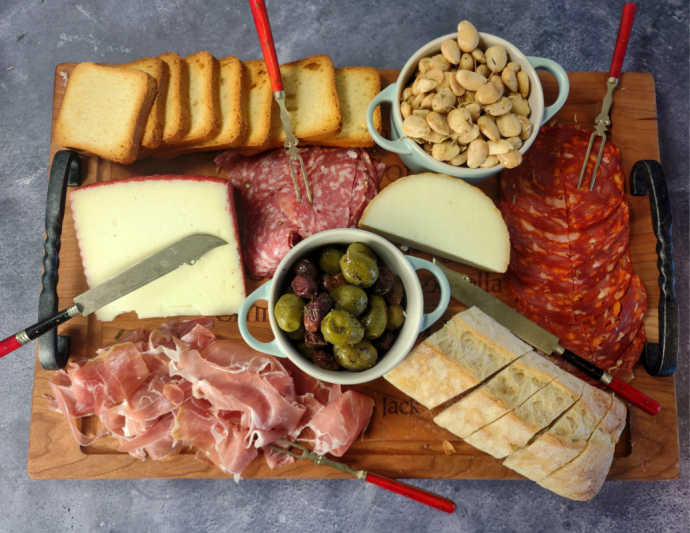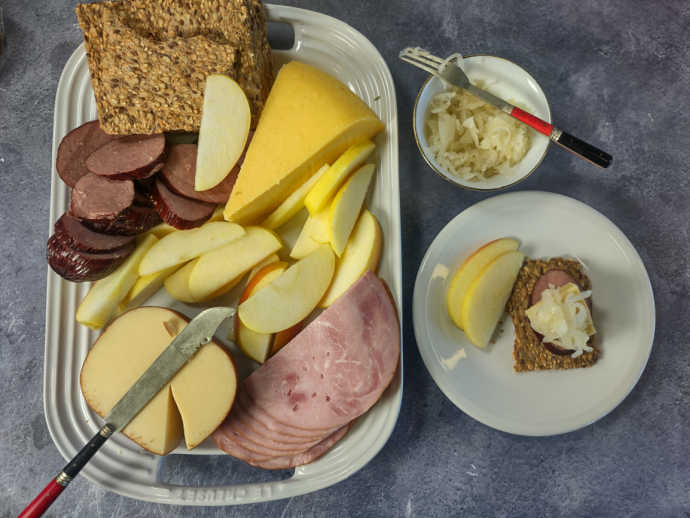How to Build a Charcuterie Board
Posted by Amy on Dec 21st 2022
At Chef’s Corner Store, we agree with Kat Kinsman where it comes to the definition of charcuterie: a proper charcuterie board includes prepared meat. We love charcuterie boards for entertaining because they are prepared ahead of time, require minimal prep work and clean up, and allow us to linger for hours with our guests. In this post, we’ll share some easy-to-remember tips for preparing charcuterie boards, along with a few ideas to help you get creative.
Charcuterie Board Basics
Ready to get started, but not sure where to begin? We love this to-the-point checklist from The Kitchen on Food Network. If you want more detailed guidance, try this Guide to Building a Charcuterie Board from Cooking School on Food Network. Both are great outlines for creating a well-balanced board.
Before you shop, we recommend choosing a theme for your board. A theme will help you narrow down your choices and create a deliciously cohesive board. We prefer to focus on a geographic region; ingredients from the same region tend to meld nicely. Europe’s cooler climates and vast farmland helped develop the cured meats, cheeses, and breads found on a traditional charcuterie board. Our boards lean on these countries for their inspiration.
Thanks to the popularity of charcuterie boards, many stores even offer pre-packed charcuterie bundles featuring complementary prepared meats. Some ingredients may not be available in all areas; check out Epicurious and The Spruce Eats for online recommendations if you are unable to find ingredients locally.
Nordic Charcuterie Board
We want to thank a recent customer of ours, Jeanne, for sharing her vacation to Finland with us and providing the inspiration for our Nordic charcuterie board. We modeled this board after a popular Finnish breakfast.

We chose smoked salmon as our prepared meat. (We know we’re playing it fast and loose with the charcuterie rules, may Kat forgive us.) If you’re feeling adventurous, track down reindeer or venison sausage, blood pudding, or a Scandinavian-style potato sausage. We also included hard-boiled eggs. For the cheese element, we love Havarti and Jarlsberg. If you’re a fan of blue cheese, we recommend Danablu or Adelost.
To cut the richness of the meat and cheese, we added fresh cucumbers, sprigs of dill, and this recipe from Saveur for Swedish pickled crudites. Try contrasting the saltier ingredients with a lingonberry or boysenberry jam, and fresh or dried figs. Finally, we love traditional rye bread, rye crackers, or Swedish crisp bread as the textural element for our Nordic charcuterie board.
Spanish Charcuterie Board
Spain offers some sensational prepared meats, often overlooked in favor of better-known Italian counterparts. We recommend a cured Spanish chorizo and sliced Serrano ham. Pair these meats with Manchego -- a firm, nutty cheese made from sheep’s milk -- and a smoky Idiazábal.

Round out your Spanish-themed board with membrillo (Spanish quince jelly), olives, grapes, dried apricots or figs, Marcona almonds with rosemary, and a pan de barra, or Spanish-style baguette, and water crackers.
German Charcuterie Board
We’d be remiss if we didn’t include a charcuterie board from a region renowned for its prepared meats. We recommend Black Forest ham, your favorite wurst, summer sausage, and beer sausage, along with Gouda, Muenster and Limburger (if you’re a fan of fragrant cheese). Add sauerkraut, pickled beets, whole grain mustard, a good European butter, sliced apples, pretzels or pretzel rolls, and rye bread.

Regardless of how you build your charcuterie board, don’t forget you’ll need a large serving tray or board. Plus, check out our guides on hard and soft cheeses for further inspiration. We hope our recommendations help with your holiday entertaining, and we’d love to see your charcuterie board creations.
Shop for cutting boards
 Free shipping over $49
Free shipping over $49










